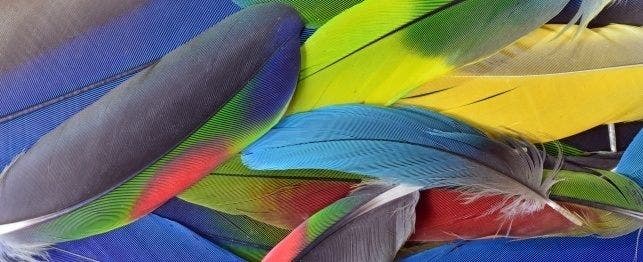
Molting in Birds
Molting is the replacement of old feathers with new ones. It is not really shedding as in dogs and cats, but it is similar, since old feathers fall out and new ones grow in their place. It’s a confusing but normal process.
Molting is not the same for every species of bird, and even differs from bird to bird. The season of the year, the temperature of the environment, nutrition, and egg laying play a significant role in determining when a bird will molt as well as how long it will take to complete a molt. All birds molt at least once a year and this process normally does not affect their ability to fly. Some may even molt up to three times per year. For Amazons, molting seems to be a continuous yearlong process.
The molting cycle typically begins after the breeding season, in late summer, and is triggered by secretions from the thyroid gland or pituitary. In some passerines, such as canaries, molting begins in the spring and continues through the summer. Usually, the feathers of the breast and head are the first to be replaced. Then the rest of the feathers are replaced, ending with the tail and wing feathers. Within two to three weeks, the molting process is complete, and all the old feathers are replaced by brand new ones. Throughout the molting process, the metabolic rate of the bird increases by about 30 . For this reason, a molting bird has a higher nutritional demand and needs proper feeding. Molting is a stressful time for a bird and they can be more vulnerable to illness.
Some bird owners may be aware of the term ‘French molt’. This is a term used to describe an abnormal molt and is named for the country in which it was first described. This type of molt is usually associated with budgies, cockatiels, lovebirds and conures. It is not known why other species of birds are not susceptible to French molt.
In French molts, replacement of the lost feather is significantly delayed and usually occurs after a sudden extensive loss of primary feathers. There are a variety of suspected causes of French molts, such as viruses, environmental changes, hereditary, parasites and nutritional problems. Any time you notice a bald patch on your bird, or feel that the molt is not progressing as it should, consult your veterinarian. Molting can lower your bird’s defenses and make him more susceptible to disease. The sooner an illness is diagnosed and treated, the better chance your bird has to recover.